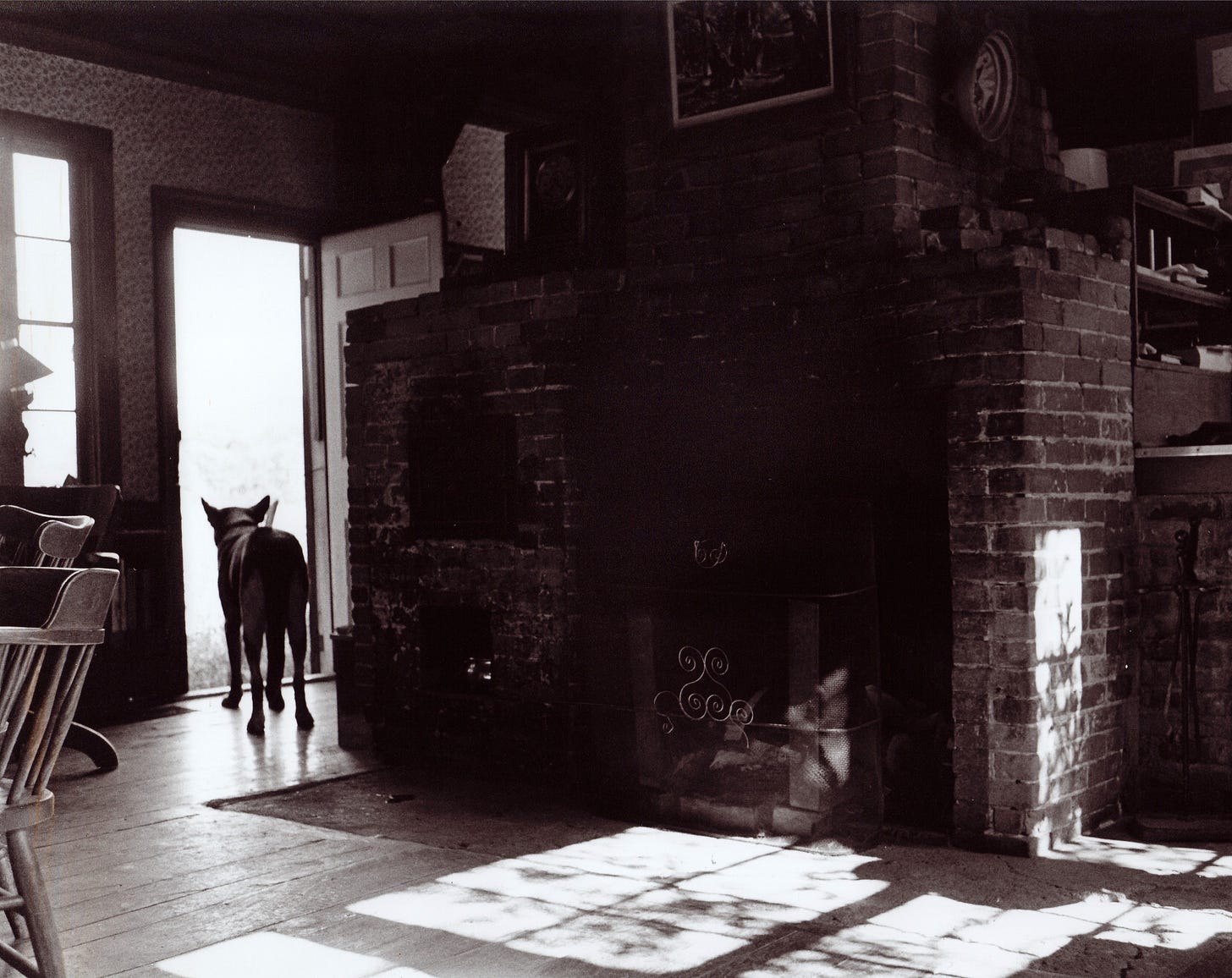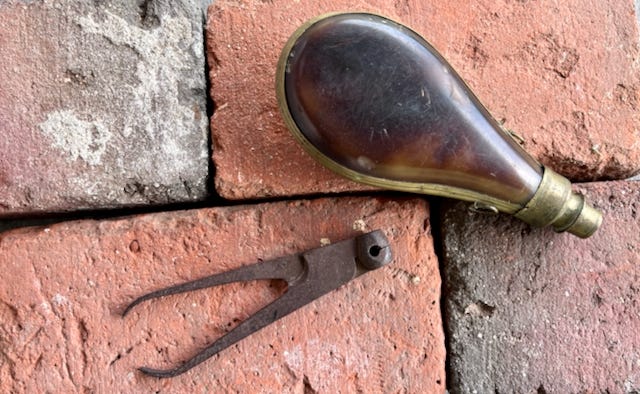The Fireplace
Dear Readers: Thanks to your thoughtful responses to last week’s post, I found myself taking a detour this week, down an overgrown path I might have missed, were it not for you...
Some of your comments in particular — evoking transience, yearning, love, and “the promise of sorrow and loss” — invited further exploration of the intricate connection between the evanescence of memory and the solid reality of bricks.
I took the photograph above after my parents’ divorce, when Dad lived alone in the house with Teddy – last in a long sequence of German shepherds who were part of our family. The fireplace was the focal point of family life all through my childhood. The bricks reached from the ground out of which they came, past bird nests and up through maple treetops, the chimney emerging in the clouds. Around this fireplace we told stories, sang from the book of Fireside Songs, and feasted on huge bowls of buttered popcorn, the dog gladly snapping up dropped pieces.
To the left of what’s visible in the photo would be the long wooden table built by my father and two grandfathers, where we ate our meals, shelled peas, snapped beans, shucked corn, folded laundry, and worked on sewing, art, and all sorts of other making projects. (This table will be featured in a future post.)
The dark rectangle on the brickwork to the left of the fireplace opening is the cast iron door to a Dutch oven. Inside, a long space extends back along the horizontal length of the chimney. In early times, a fire would be built in this oven in preparation for baking day. In the evening, coals and ash were raked out, and the bread placed on the floor of the now-hot oven. It was left there overnight, baking as the oven cooled, the finished loaves pulled out first thing in the morning. Brother Peter, ever adventuresome (he who printed the counterfeit dollar bills mentioned in last week’s post), replicated this process once, proudly presenting two round loaves of bread the next day. I have only a dim memory of the finished product — round, rather well-cooked and black-bottomed — but we ate it and it was good and satisfying, truly made ‘from scratch.’
For children, the most intriguing aspect of the fireplace was what we called ‘the chimney hole.’ This was a cavity behind the grandfather clock shown in the photo — high up and large enough to climb into and crouch down in. When my parents bought the house in 1942, this space had been used as a trash bin. When Dad cleaned it all out, he found an ancient bullet mold and a powder horn, shown below. Since the house was built in the late 1700’s, these artifacts must have been left behind by some of the very first occupants of the house.
Each of us at some point discovered — or was shown by an older sibling — how to scrabble our way up the sloping, stepped wall of brick to reach this chimney hole. Once perched up there, one had a unique look-out post from which to spy on the humming activity down below, for the most part unnoticed by those under observation. In later years I drafted a children’s story that centers on the chimney hole — based on the true adventures of a sibling at age five.
I conclude this post with a poem inspired by the photograph at the top. Dad loved the picture so much that I had it enlarged to hang on the wall of his room when he came to live with us. It resides there today, in what is now my study.
Teddy Looking Out
The old dog stands at the open door
looking out to the east
as if about to step over the sill
into a white and blinding light—the future.
Sun through a side window
throws a veil of mullioned lacework
over the cold hearth and halfway up
the brickwork of the old chimney.
The painting over the fireplace,
two worn chairs, a grandfather clock,
enveloped in folds of stillness
and the mystery of semi-darkness,
the dog, his people, the unnamed
who built this house and the things
they touched – all held safe
in the comfort of this hearth.
~~~
Many thanks to my siblings for digging through old photos and emails to help piece together the intricate puzzles of the past. Appreciation to my readers & subscribers — I look forward to more of your comments. Please let me know if there are topics, themes, or questions you’d like me to address down the road.






Hi, Clyde,
My grandparents’ house in Peacham, the Elkins Tavern, was built in 1787 and has some of the features of your old house—including mysterious hidey holes. Jock lives there now. I love your writing and my children grew up with your book. Love your evocative writing!
I never knew about the bullet mold and powder horn! Do you have them? Very cool. I believe that there was a date over the front door of 1805 for the house, but I could be wrong.